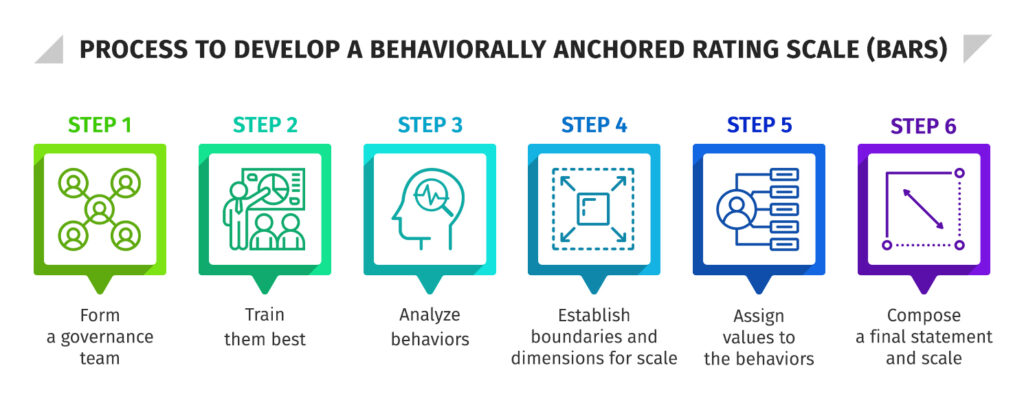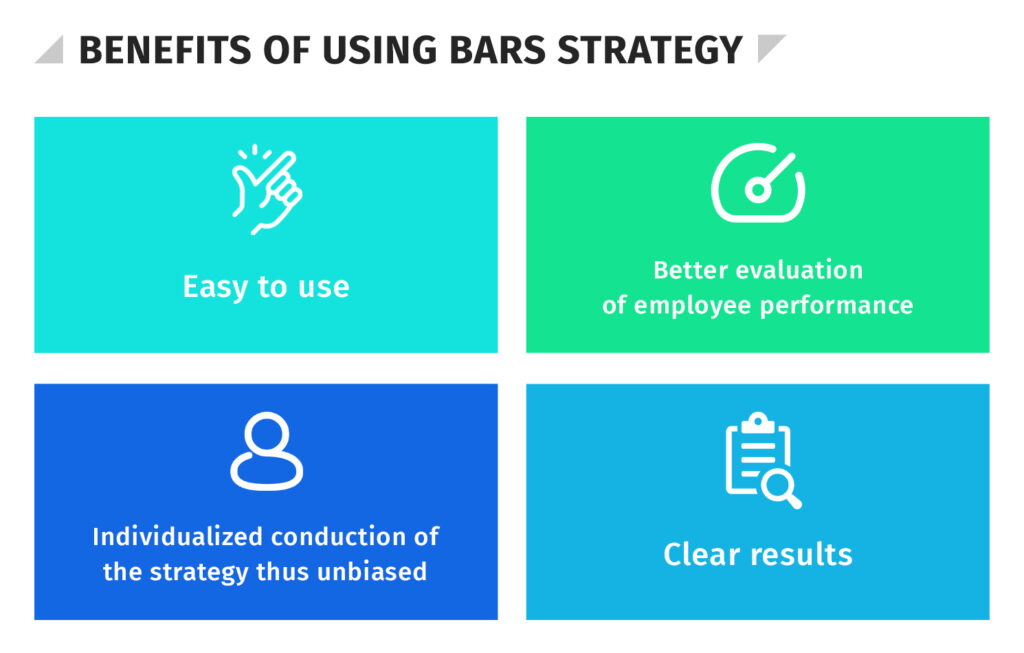

Behaviorally Anchored Rating Scale, also known as BARS, is an old method of scale that is used to rate the performance of a team. Despite the fact that the method is ancient, HR professionals and experts still use this strategy to measure performance through behaviors. How does that happen? Read the complete article to know the in-depth details.
The Behaviorally Anchored Rating Scale rating scale uses “statements” of behavior instead of general adjectives on regular or graphic rating scales. With the BARS technique, an employee’s performance is evaluated against particular instances of conduct and performance dimensions rated numerically to gather data on the employee’s performance.
To learn more about the BARS method via video, then watch below. Otherwise, skip ahead.

To improve the correctness of a student’s grade, teachers assign specific actions for evaluation. Since each job in an organization has its own distinct set of behaviors to evaluate, you depend on universally appropriate behaviors. Preliminary studies have shown the subject of basic rating measures is reduced by using traditional rating scales with particular work behaviors. To determine whether it’s real, we’re going to investigate this further.
For now, let’s take a look at some instances of the BARS system.
Here’s the evaluation of a customer service representative’s job:
Its common practice to rating employees’ and individuals’ performance on specific behavioral patterns like how quickly and courteously they answer the phone, using a typical rating performance system asking, “1-never, 2-non frequent, 3-from time to time, 4-frequently, 5-always.” It’s easy to understand how the more precise BARS approach will affect the appraisal’s conclusion.
Here’s the evaluation of a nurse’s performance dimensions:
Here’s the evaluation of a waiter’s job:
In other words, what are the positives and negatives?
Despite the usefulness of these examples, not all aspects of Behaviorally Anchored Rating Scales are flawless. One should weigh the pros and cons before deciding whether or not to make the switch. Take a look at the next sections to get an idea of the pros and cons of a behaviorally anchored rating scale.
Also, if you’re looking to excel in your HR career and become a better professional, don’t forget to check our top-rated human resources certification courses:

The steps listed below will aid in the creation of the final product:

Here you can find the pros and cons of the BARS strategy:
The following are some of the advantages of employing the BARS strategy:

The following are drawbacks of using the BARS strategy:
When weighing the benefits and drawbacks of employing Behaviorally Anchored Rating Scales, it becomes clear that this approach is best suited to more influential organizations with the financial wherewithal to see the project through to completion. As a result, the organization must establish precise time and commitment requirements for its executives.
Instead of having many separate roles, the organization should have groupings or divisions of comparable tasks. If you run into issues with bias in your present performance management method, BARS is a helpful tool for assessing personnel.
Because of their focus on conduct, these assessments are impartial and difficult to sway. Also, to succeed, you need a plan.
It is suggested that you examine BARS in-depth before incorporating it into your performance handling strategy. It would be best if you had a thorough grasp of a traditional rating scale of the process to implement it in the correct way for your own company. Having a team on board is also essential. Managers should engage in-depth, as said earlier.
The behaviorally anchored rating scale is a quantified rating strategy for measuring performance based on different behaviors compared to a specific positive behavior. The metrics are noted on a scale points ranging from 5 to 10 points. Despite the fact that this strategy is in practice for tens of years, it provides a great strategy to judge performance metrics. If you’re looking to develop a behaviorally anchored scale, feel free to go through the above-mentioned steps.
If you are new to Human Resources and are looking to break into any HR Operations position, we recommend taking our HR Certification Courses , where you will learn how to build your skillset in human resources, build your human resources network, craft an excellent HR resume, and create a successful job search strategy that lands you a sought-after HR Operations job.
Josh Fechter is the founder of HR.University. He's a certified HR professional and has managed global teams across 5 different continents including their benefits and payroll. You can connect with him on LinkedIn here.